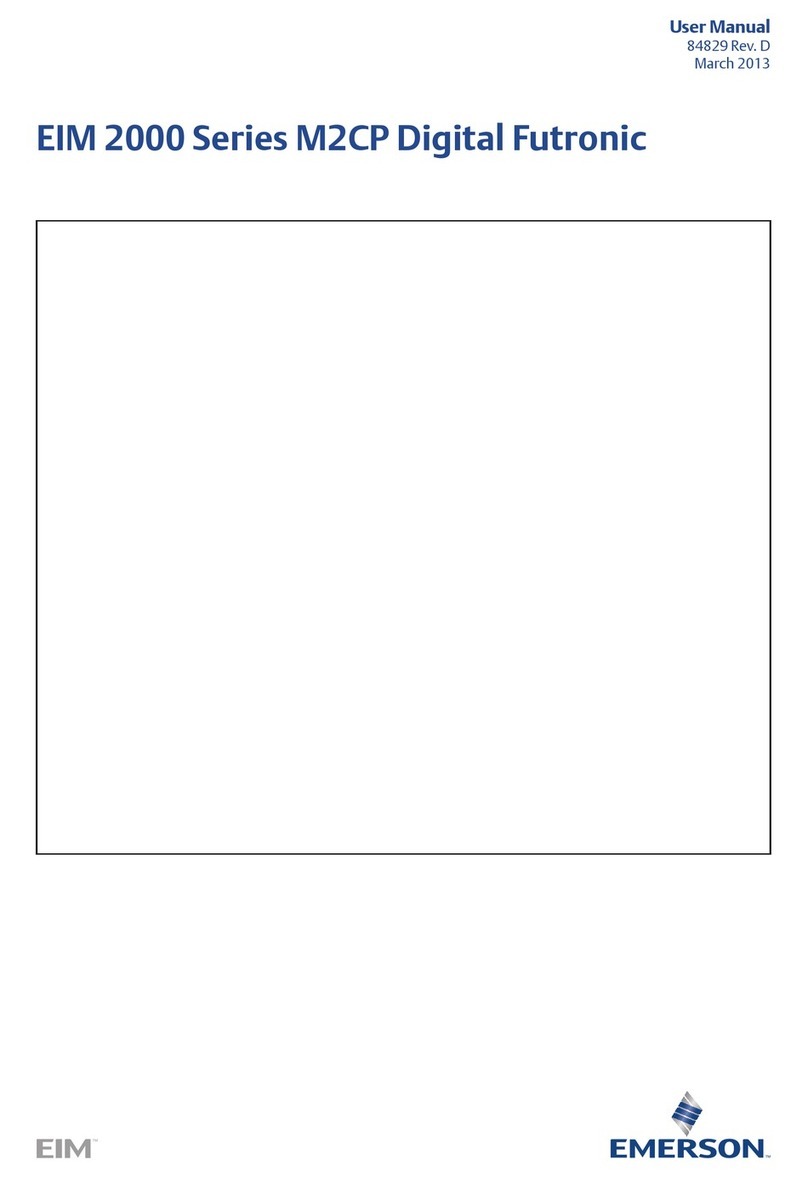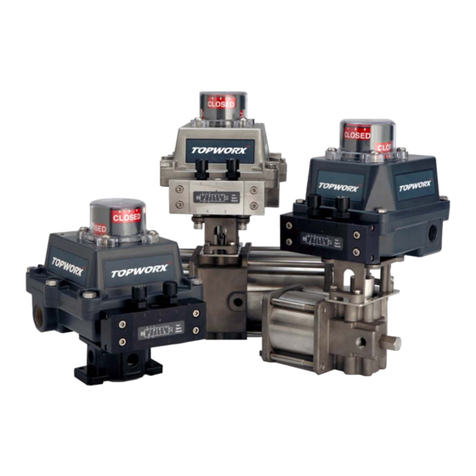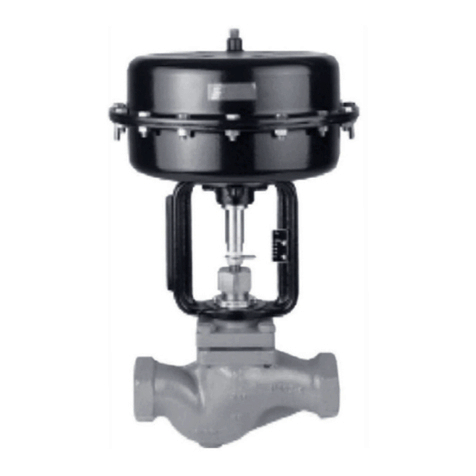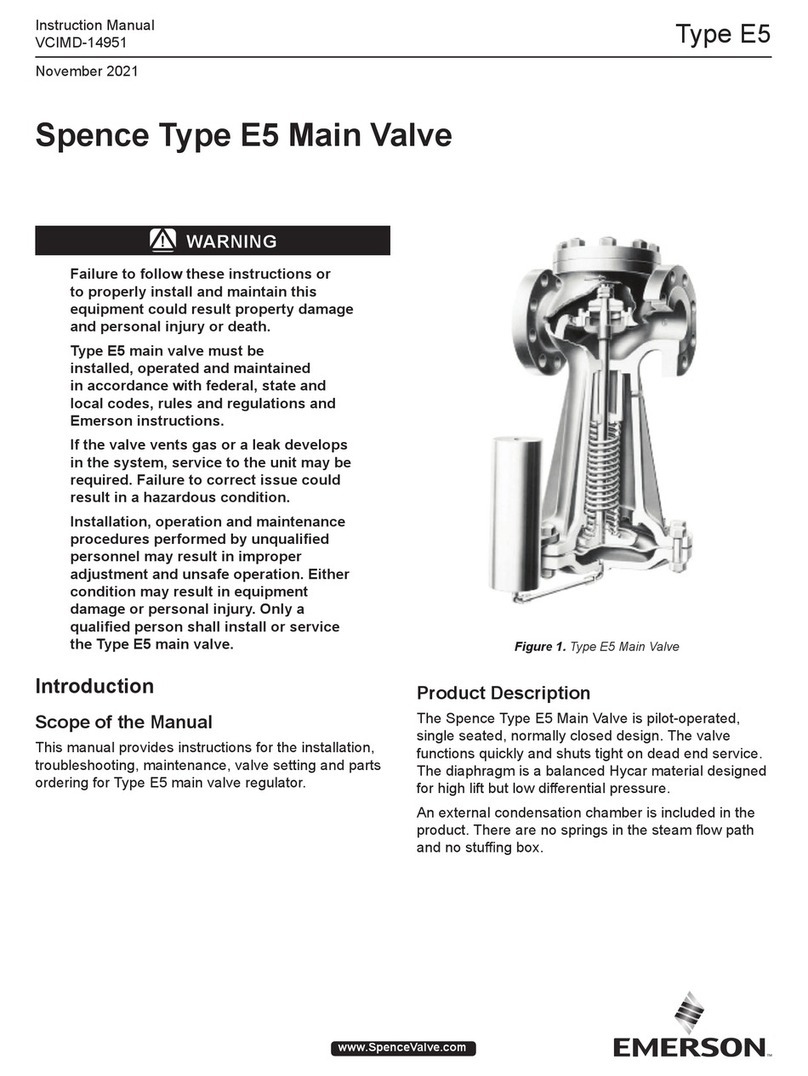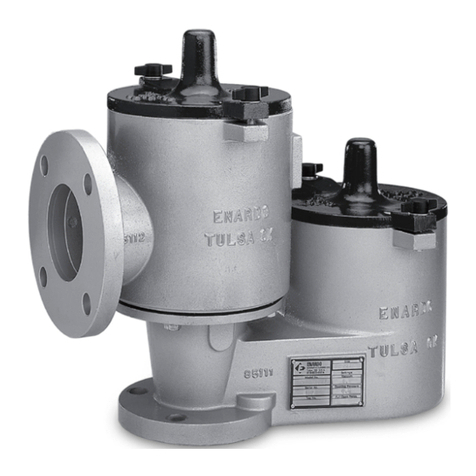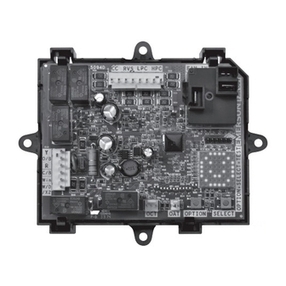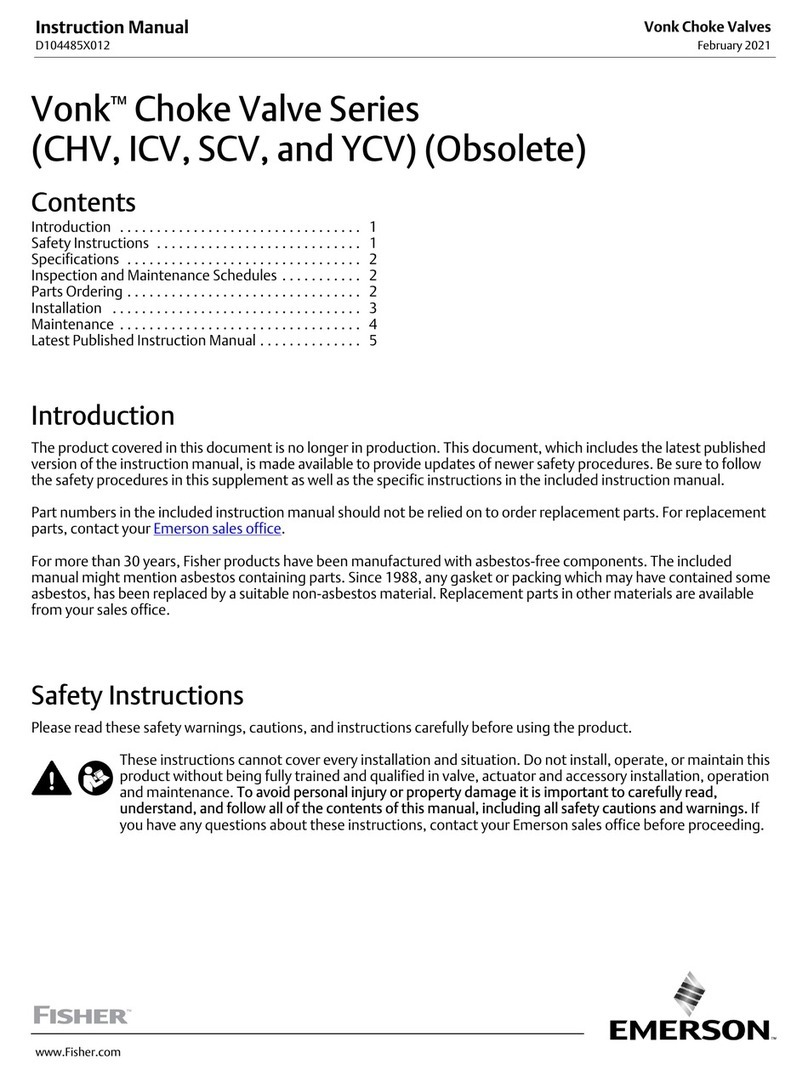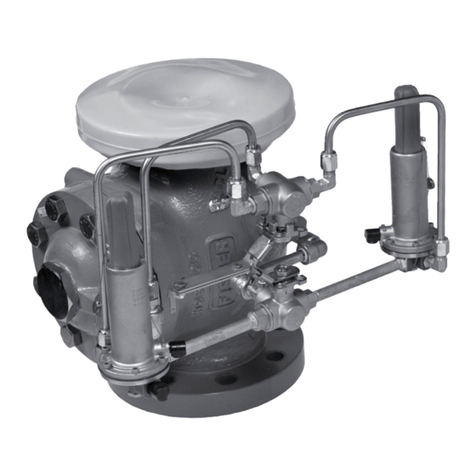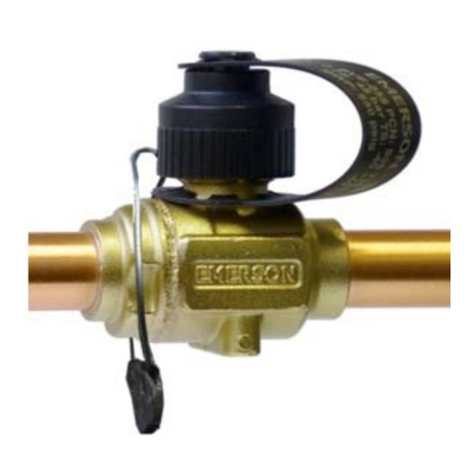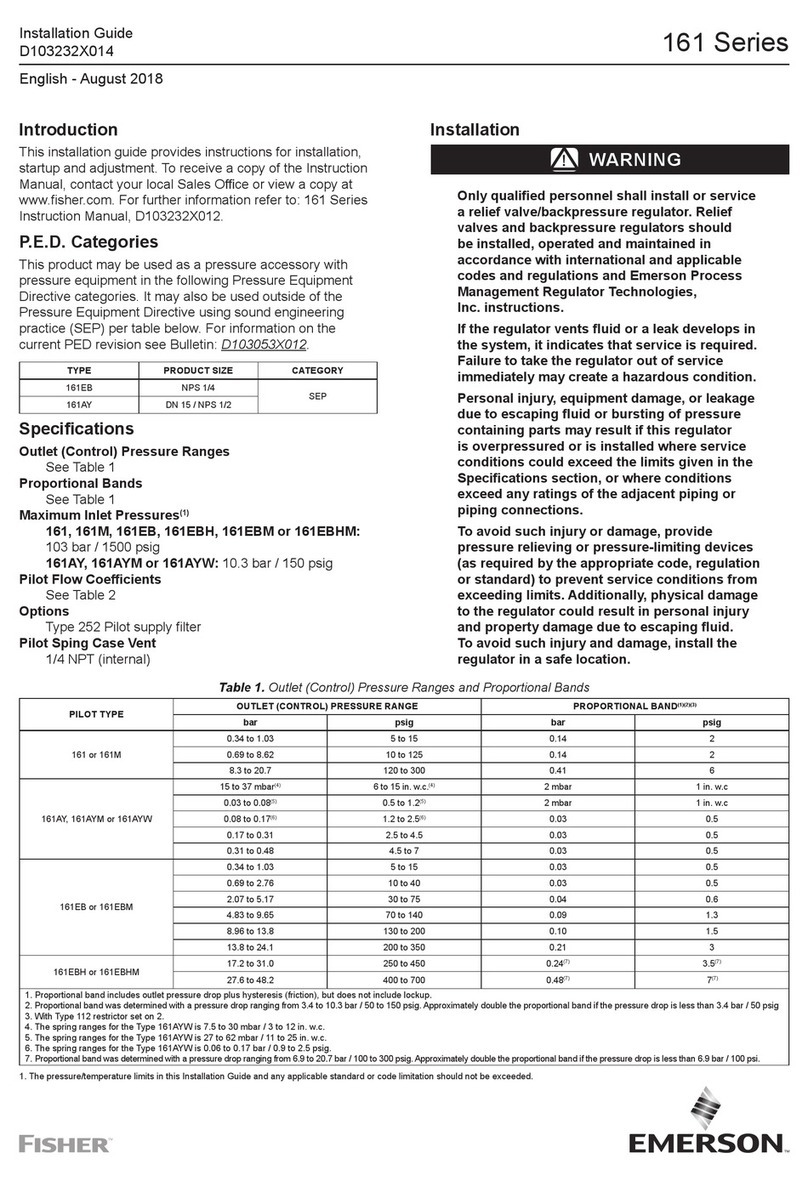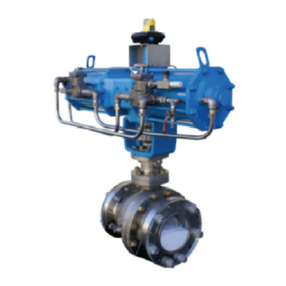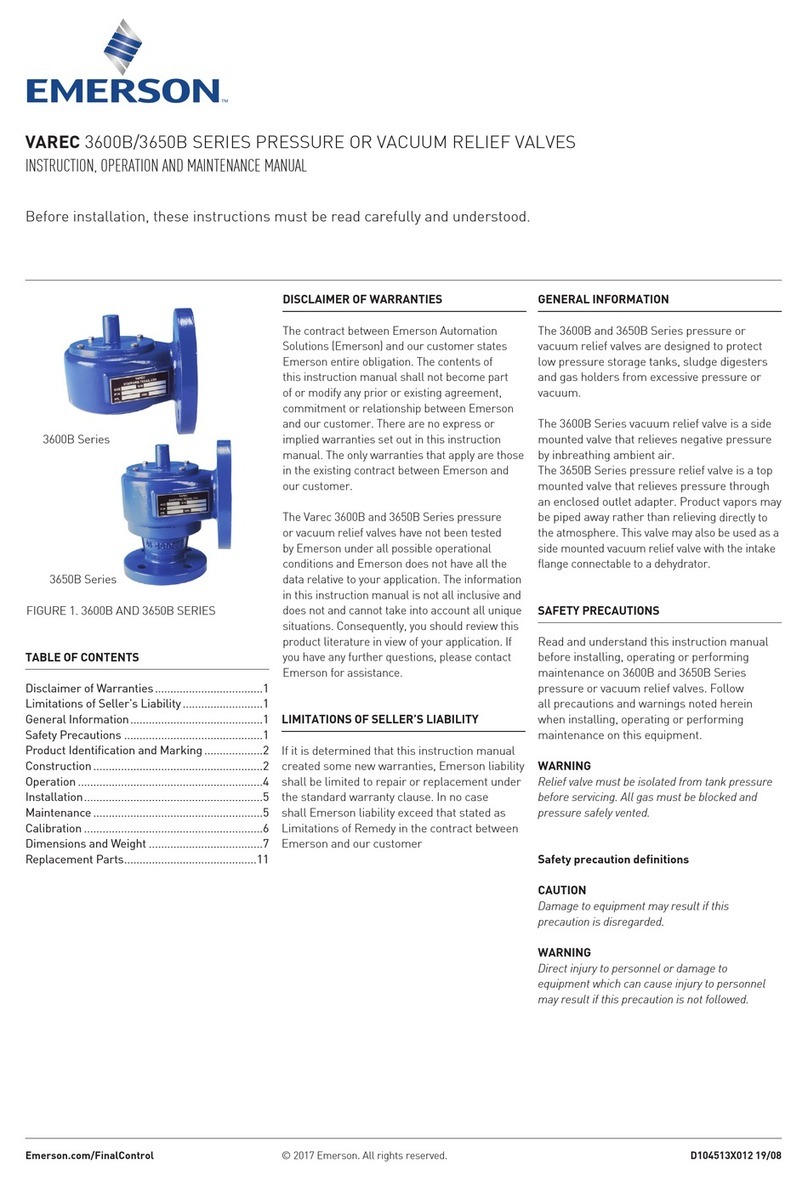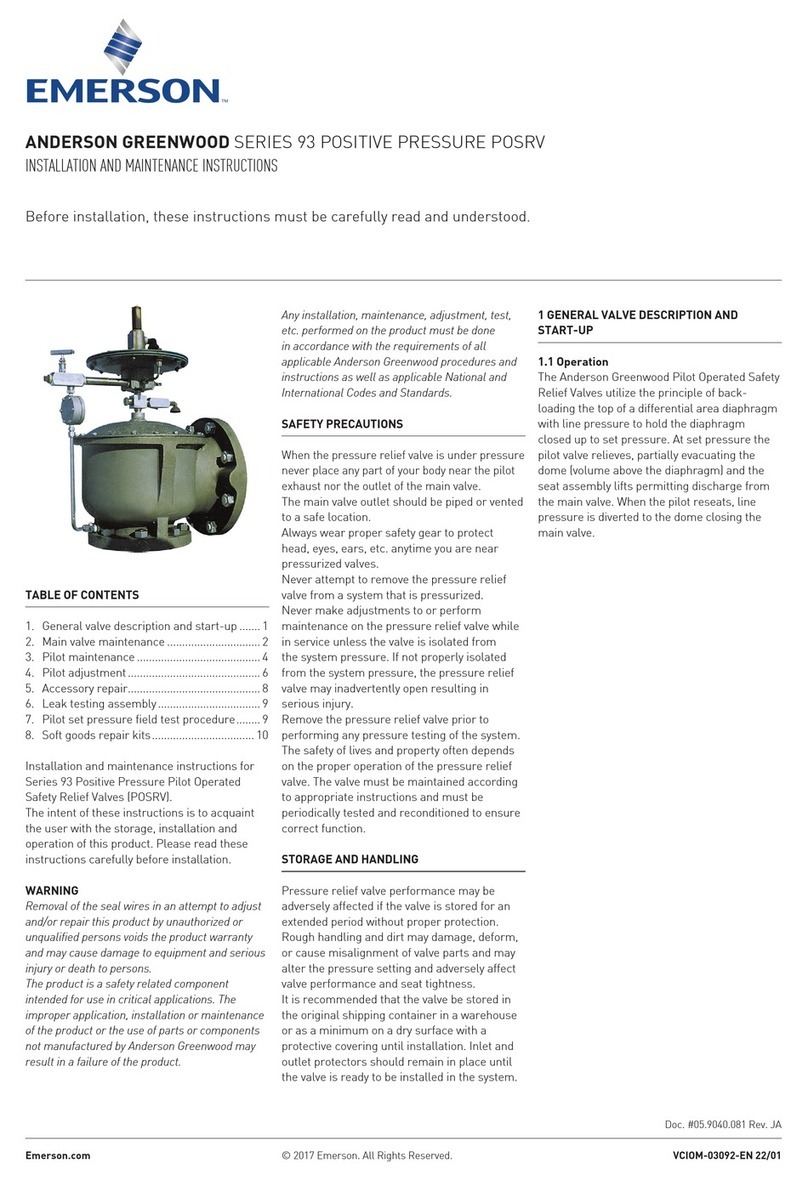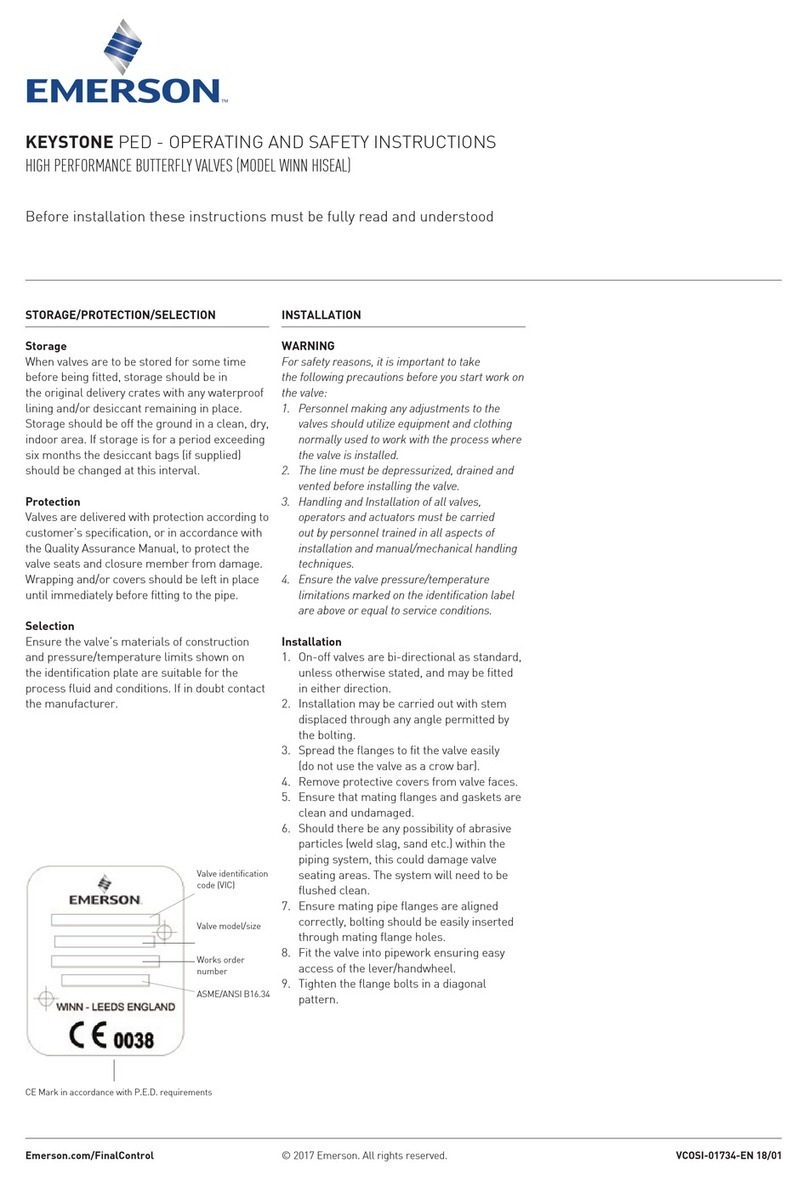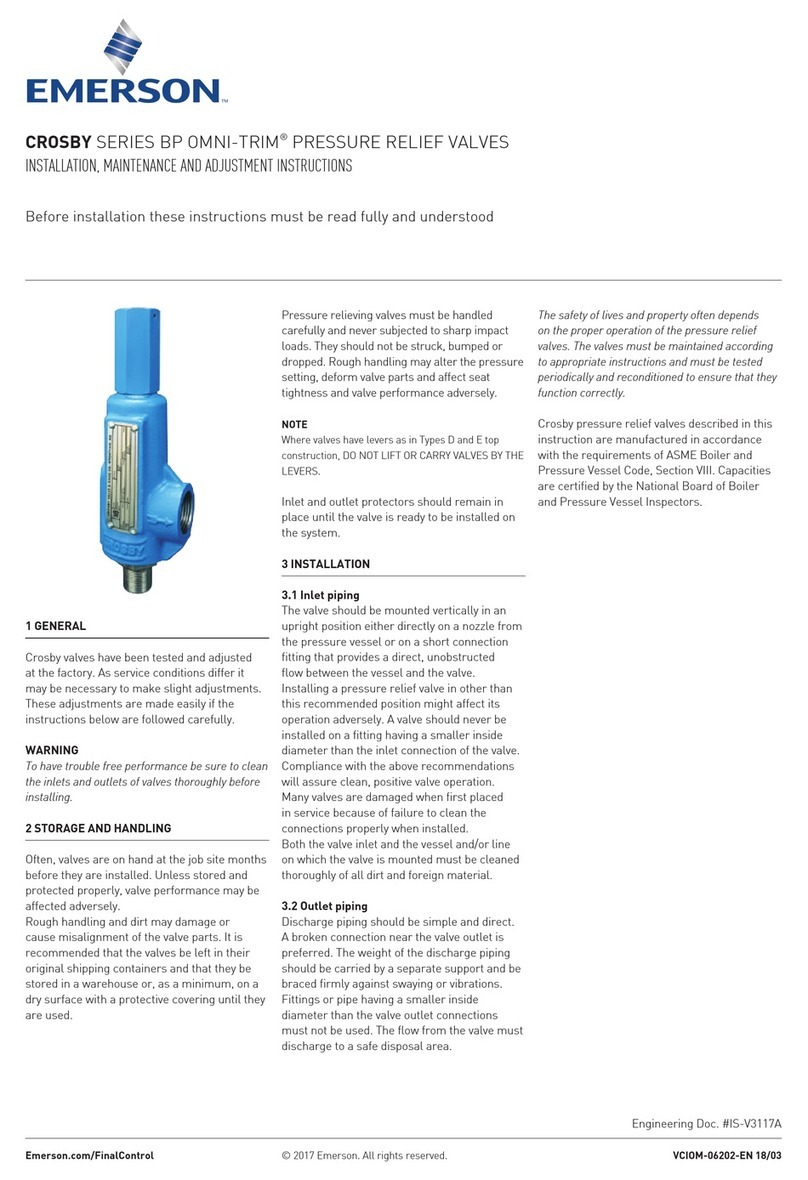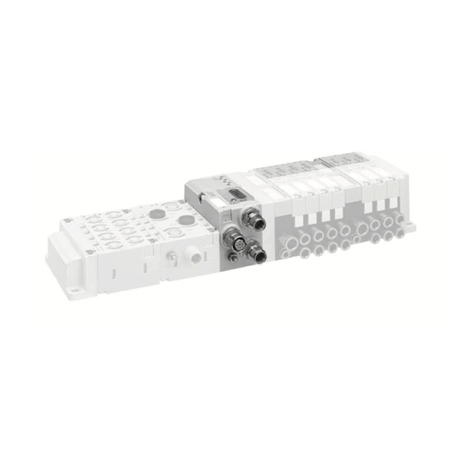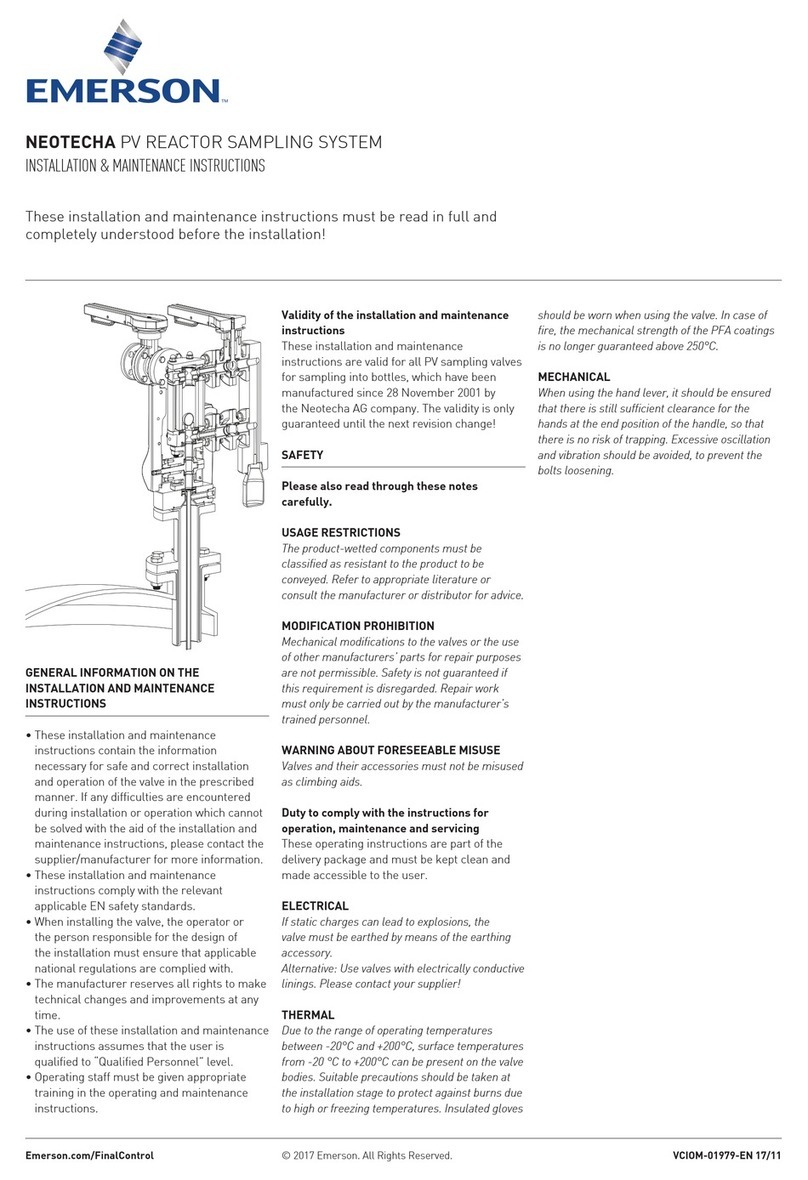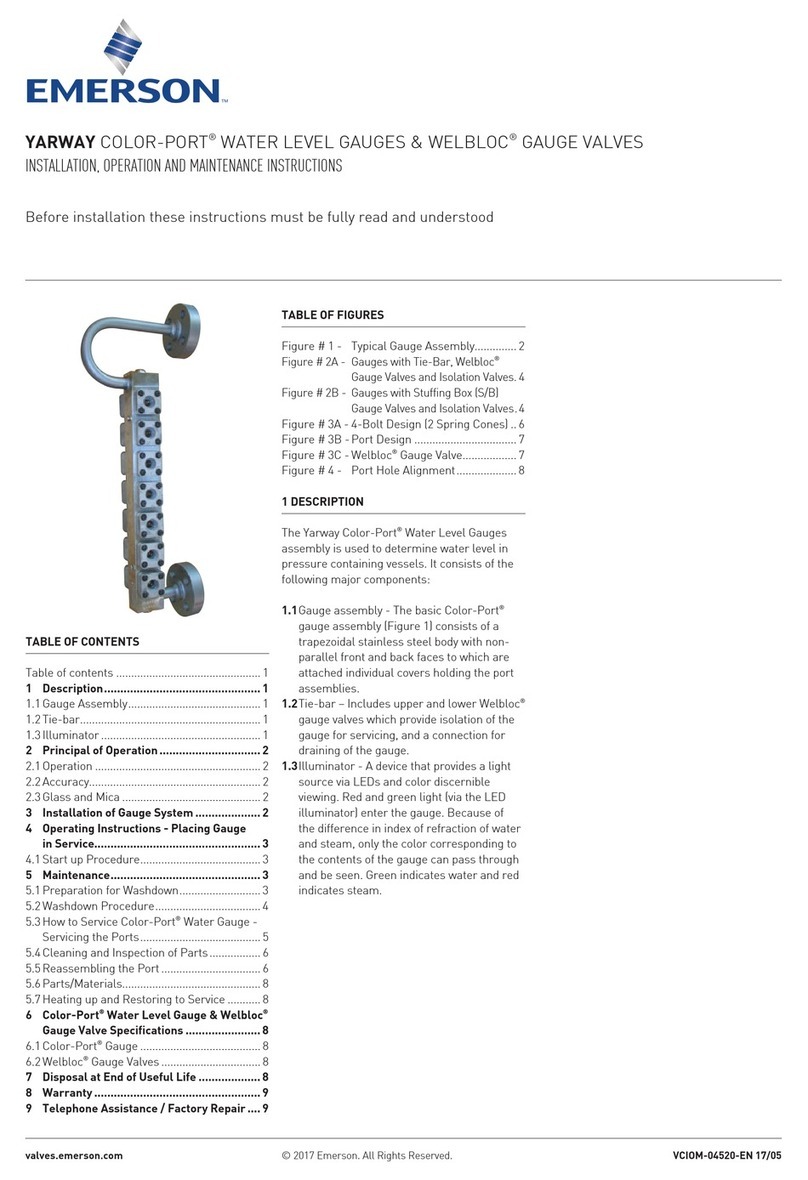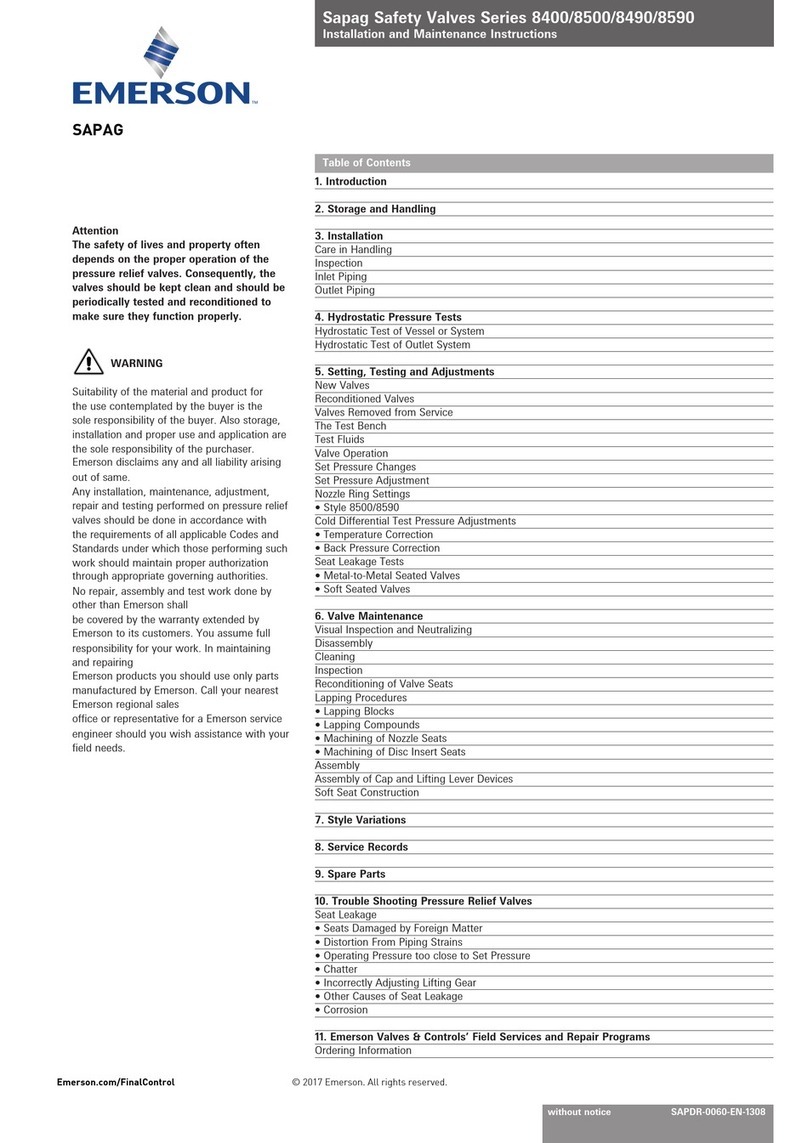
8580 Valve
Instruction Manual
March 2010
6
CAUTION
8580 disk rotation is counterclockwise
to open (when viewed from the
actuator side of the valve body, see
figure 7) through 90 degrees of disk
rotation. Rotating the disk (key 3) past
either the open or closed position
could damage the seal and disk
sealing surfaces and could cause the
disk to jam in the seal retainer.
6. With the disk in the closed position, install line
flange gaskets, and insert the valve between the
pipeline flanges. Use either flat sheet gaskets or
spiral-wound gaskets with compression-controlling
centering rings. Spiral-wound gaskets without
compression-controlling centering rings are not
recommended for this purpose.
7. Depending on valve size and pressure rating, the
wafer style valve is centered in the pipeline using
either retainer clips or the flange bolt holes. (For
valves that have four flange bolt holes in the valve
body (key 1), each hole engages one corresponding
line flange stud.) Insert the valve between the
flanges and use either the retainer clips or install two
or more line flange studs into the line flanges to help
hold the valve in position while centering the valve.
Carefully center the valve on the flanges to ensure
disk clearance.
DSelect and install two pipeline gaskets.
Note
Lubricate line flange studs before
inserting them into flanges. If
necessary, provide additional support
for the control valve assembly
because of its combined weight.
8. After centering the valve body, first lubricate and
then install the remaining line flange bolting to
secure the valve in the pipeline. Tighten the nuts to
the line flange studs in a crisscross pattern to ensure
proper alignment of valve, gaskets, and flanges.
WARNING
An 8580 valve body is not necessarily
grounded when installed in a pipeline.
If the valve is used in a flammable or
hazardous atmosphere or for oxygen
service, an explosion could result due
to a discharge of static electricity from
the valve components. To avoid
personal injury or property damage,
always make sure the valve body is
grounded to the pipeline before
putting the control valve assembly into
operation in a flammable or hazardous
atmosphere.
Note
Standard packings for the 8580 valve
are composed of all conductive
packing rings (graphite ribbon
packing) or partially conductive
packing rings (such as a carbon-filled
PTFE female adaptor with PTFE V-ring
packing) to electrically bond the shaft
to the valve body for hazardous area
service. For oxygen service
applications, provide alternate
shaft-to-valve body bonding according
to the following step.
9. For oxygen service applications, attach the
bonding strap assembly (key 131, figure 3) to the
shaft with the clamp (key 130, figure 3), and connect
the other end of the bonding strap assembly to the
valve body with the cap screw (key 35). Secure each
cap screw with a hex nut (key 36).
WARNING
Personal injury could result from
packing leakage. Valve packing was
tightened prior to shipment; however,
the packing might require some
readjustment to meet specific service
conditions.
Valves with ENVIRO-SEALtpacking systems will
not require this initial re-adjustment. See
ENVIRO-SEAL Packing System for Rotary Valves
Instruction Manual (D101643X012) for packing
instructions. If you wish to convert your present
packing arrangement to ENVIRO-SEAL packing,
refer to the retrofit kits listed in the parts kit
sub-section on page 17 of this manual.
Maintenance
Valve body parts are subject to normal wear and
must be inspected regularly and replaced as
necessary. The frequency of inspection and
replacement depends upon the severity of service
conditions. Instructions are given in this section for:

